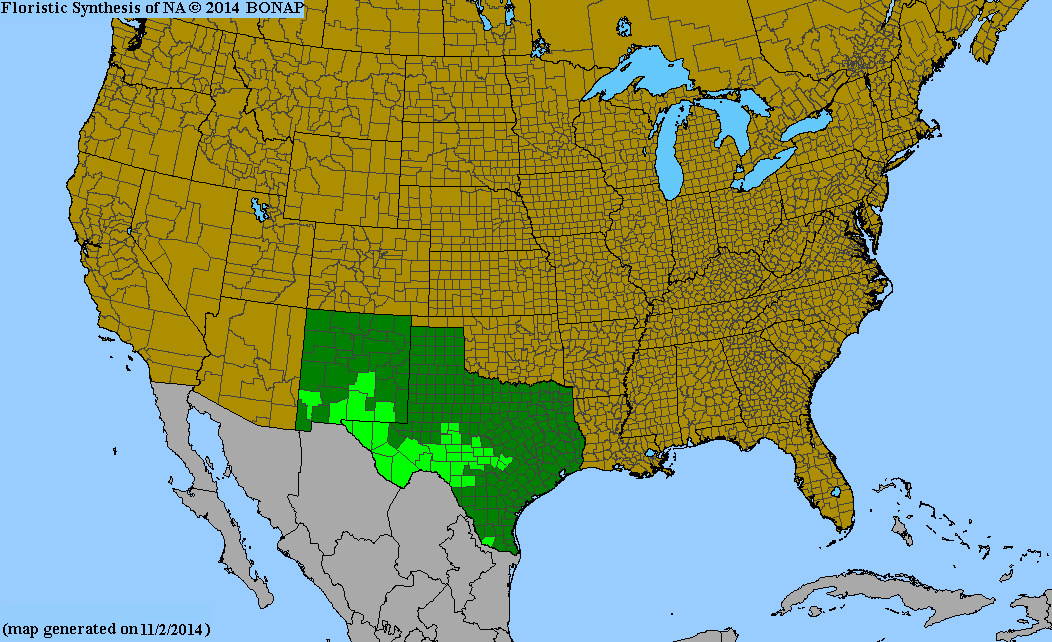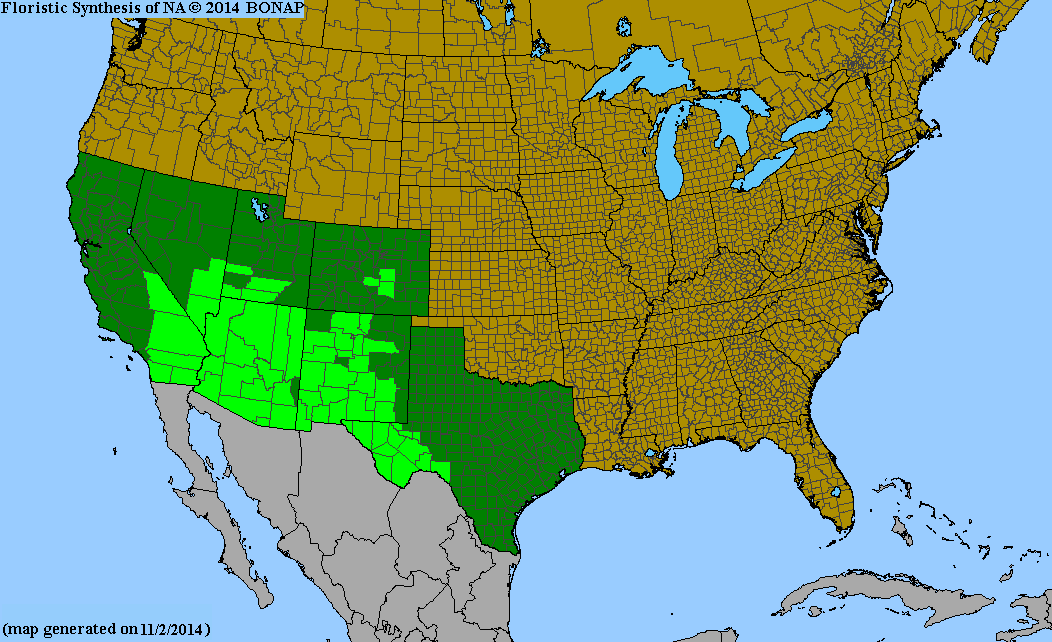Click on the images below to see larger versions.
| Scientific Name | Menodora longiflora | USDA PLANTS Symbol | MELO2 |
| Common Name | Showy Menodora | ITIS Taxonomic Serial No. | 32984 |
| Family | Oleaceae (Olive) | Wildflower Center Reference | Click Here |
| Description | Habitat: Desert environments; dry, limestone and igneous, soils on rocky hillsides, canyons and ledges along streams. Plant: Erect perennial, 1-1/2 to 3 feet tall; numerous, branched stems, smooth to densely hairy. Leaves: Opposite lower and alternate above; linear to elliptic-lanceolate, up to 2-1/4 inches long; sessile; surfaces smooth or slightly hairy. Inflorescence: Numerous bright yellow flowers in terminal cymes, smooth floral tube 1 to 2-1/4 inches long flaring open to 5 pointed corolla lobes; calyx with 8 to 12 green linear lobes almost 3/4-inch long; blossoms are fragile, and tend to close or drop when disturbed. Bloom Period: June to September. References: "Wildflowers of Texas" by Michael Eason, "Manual of the Vascular Plants of Texas" by Correll and Johnston and NRCS/USDA. |
BONAP Distribution Map |
Texas Status: Native |
| Scientific Name | Menodora scabra | USDA PLANTS Symbol | MESC |
| Common Name | Rough Menodora | ITIS Taxonomic Serial No. | 32985 |
| Family | Oleaceae (Olive) | SEINet Reference |
Click Here |
| Description | Habitat: Dry, rocky or sandy soils; hillsides, mesas, scrublands. Plant: Perennial with several to many erect stems from a woody base; 4 to 16 inches tall. Leaves: Opposite lower, becoming alternate above; sessile; blades linear-oblong to elliptic-oblong with a tapering base; 3/8 to 1-1/4 inches long and up to 1/4-inch wide; minutely but distinctly rough-hairy, at least along margins. Inflorescence: Small, terminal clusters of a few bright yellow flowers, each flower about 1/2-inch across, funnel-shaped with 5 or 6 lobes (petals) with rounded tips bending slightly backwards at maturity; 7 to 12 (+/-) narrow, pointed, rough-hairy calyx lobes (sepals) below; two protruding stamens less than 1/3-inch long; protruding pistil 3/8-inch long. Bloom Period: April to June. References: "Manual of the Vascular Plants of Texas" by Correll and Johnston, www.americansouthwest.net, and SEINet. |
BONAP Distribution Map |
Texas Status: Native |












